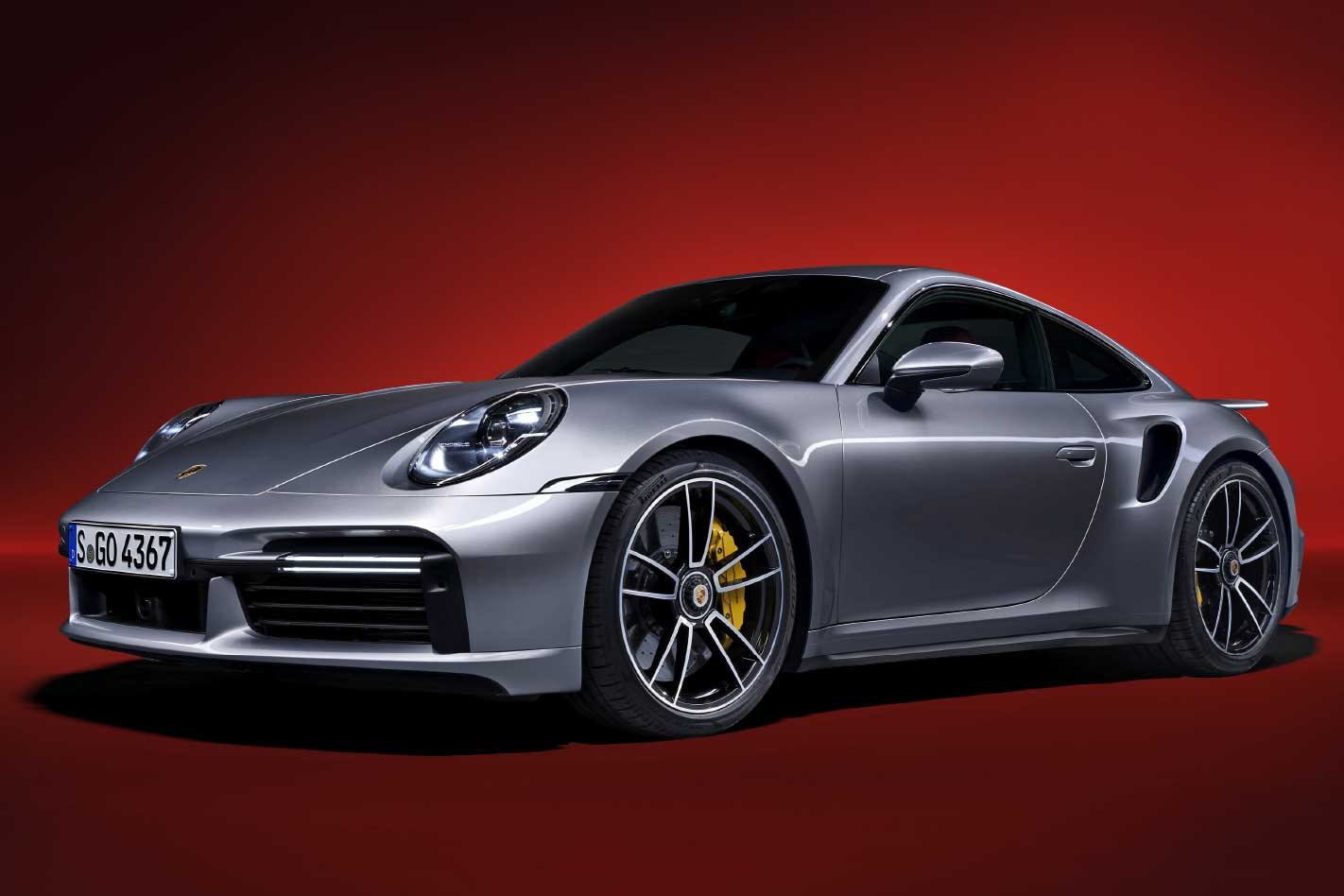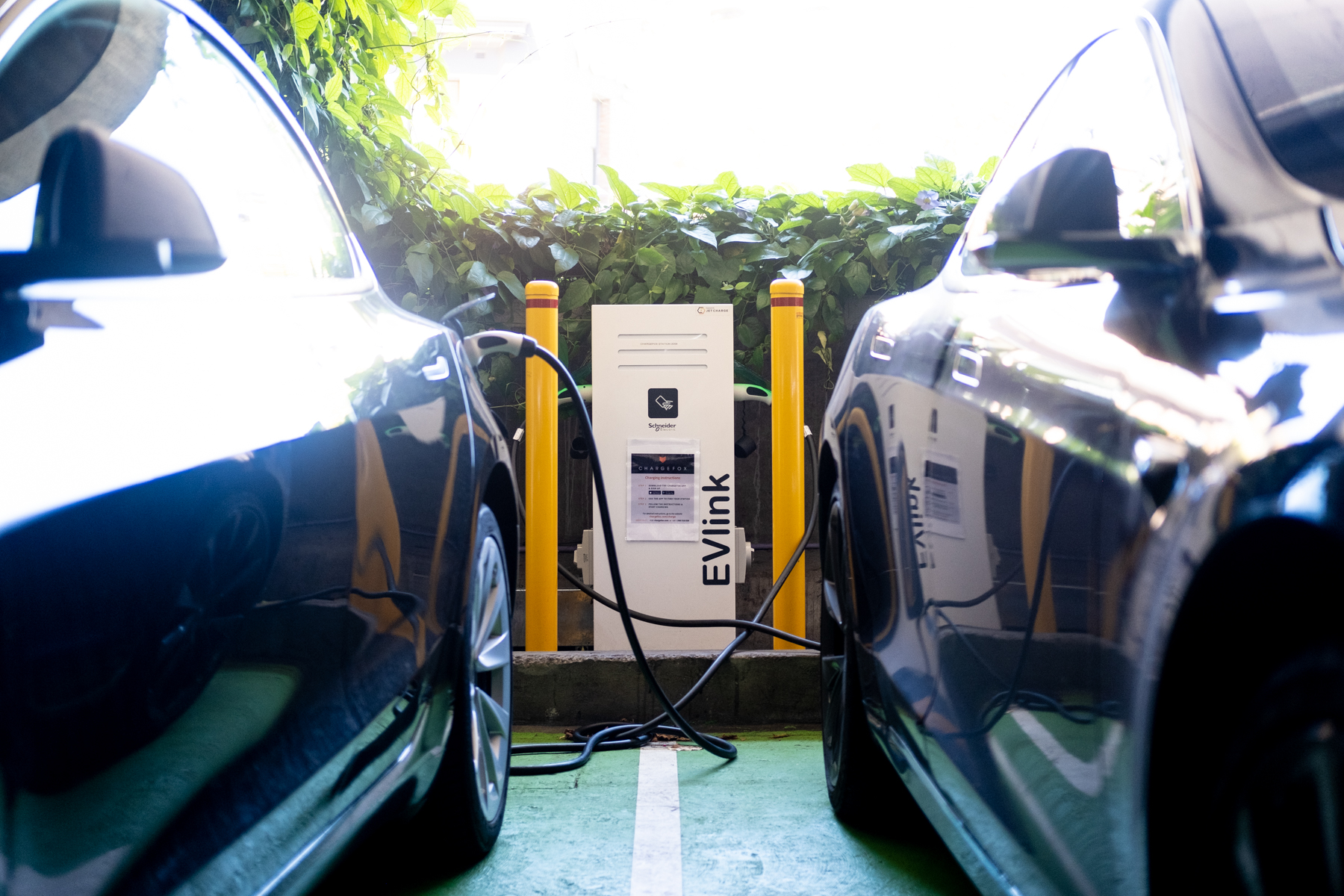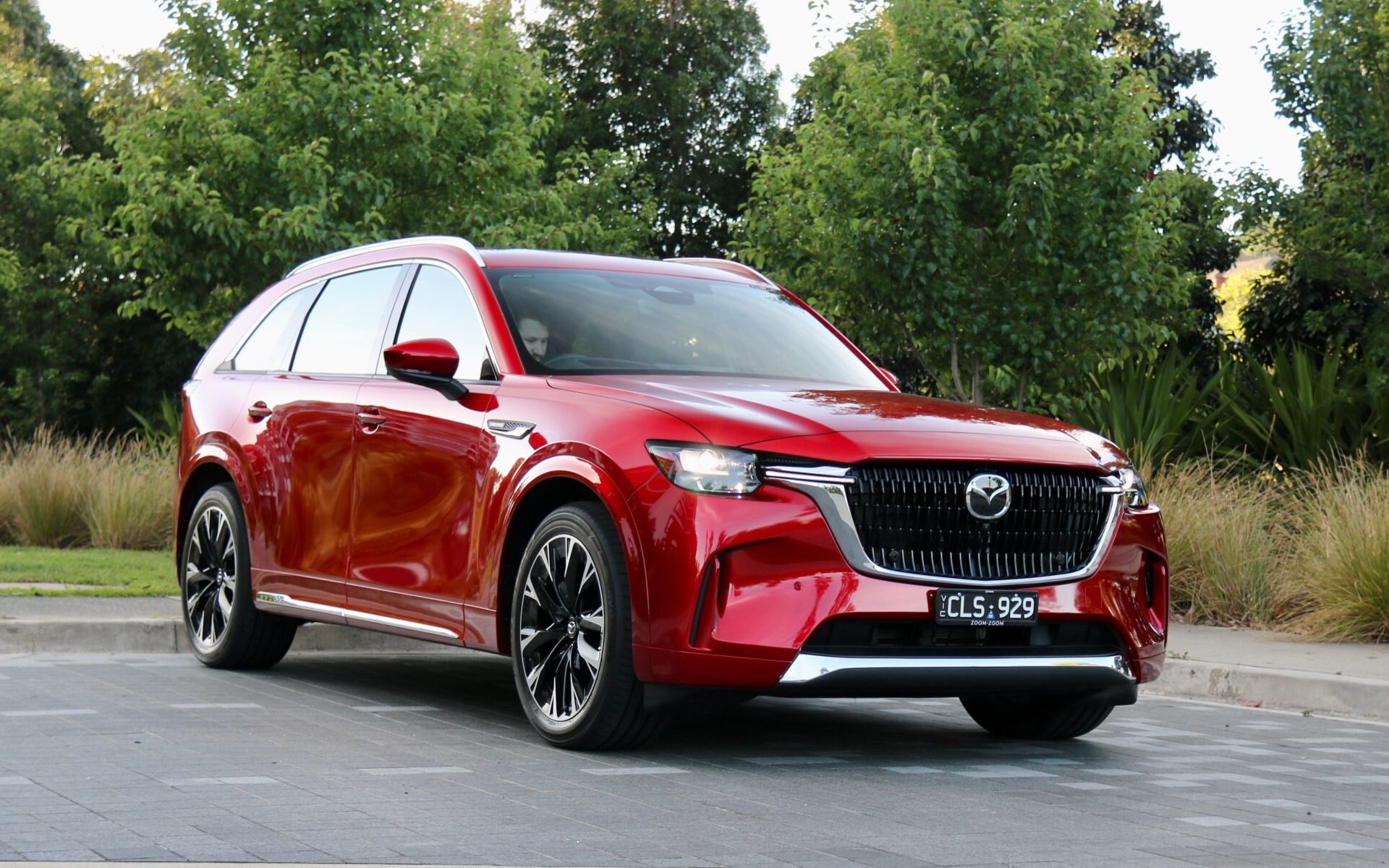The new Porsche 911 Turbo S is everything you’d expect: quicker, more capable, more powerful, more expensive and packed with more technology. What you might not expect is the injection of attitude.
In times past, before it became the benchmark all-weather supercar, the 911 Turbo was spoken of in reverential tones. With its huge power, savage delivery and unusual weight distribution, extracting the best from the original 930 Turbo took considerable skill. Not everyone was up to the task.
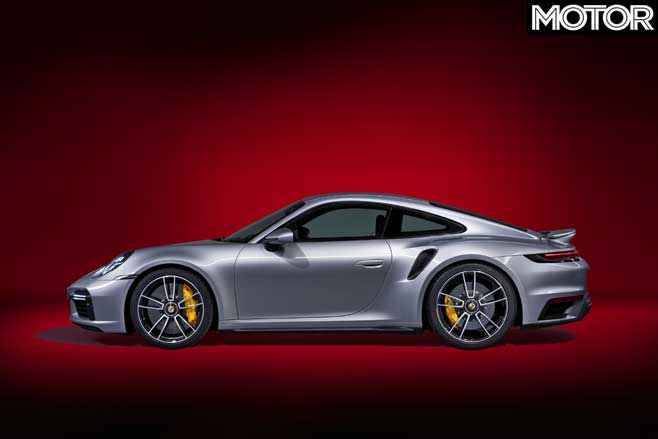
Porsche isn’t intending to hark back to those days with the latest 992-generation model, but it does want to bring back a bit of mongrel to its flagship non-GT 911. “There wasn’t any real need for significant last-minute adjustments,” Porsche’s sports car boss Frank-Steffen Walliser told MOTOR’s European correspondent, Georg Kacher, during the latter’s prototype ridealong.
“But I still feel we have steered the 992 Turbo fractionally more in a back-to-the-roots direction. To do so, even little things helped: stiffer joints, harder rubber bushings, tighter attachment points, modified spring and damper calibrations.”
Porsche’s official press release backs this up, stating, “New optional equipment has been introduced to underline the much sportier image of the all-wheel drive 911 Turbo S. These include the Porsche Active Suspension Management (PASM) sports chassis that has been lowered by 10mm and the sports exhaust system with adjustable flaps that guarantees a distinctive sound.” Not that the Turbo has abandoned everyday usability: “What we definitely refrained from is turning a nicely balanced GT into a hard-edged street fighter,” said Walliser.

PASM includes new-generation adaptive dampers which are able to react faster and more precisely; if they’re anything like those in the Carrera models, ride quality in normal should improve markedly. Expect high-tech chassis aids like rear-wheel steering and active anti-roll bars to continue, too.
The new 911 Turbo S – there will almost certainly be a standard Turbo variant, but Porsche is leading with the flagship S model for now – has a wider footprint than ever before, the front track extended by 42mm and the rear 10mm.

Staggered wheels make their debut, the rears measuring 21 inches in diameter wrapped in 315/30 tyres and the fronts 20 inches wearing 255/35s; the car you see here wears Pirelli P Zeros, but like the regular 911 Carrera we’d expect Dunlops and Michelins to also be available. Brakes carry over in the form of monster 410mm carbon-ceramic rotors and six-piston calipers at the front matched to 390mm discs and four-piston calipers at the rear. Three-stage ESP appears for the first time, on and off now separated by a more relaxed Sports mode.
The car’s fatter stance has necessitated a larger body, the front widened by 45mm and the rear 20mm. Weight has also crept up; no figure has yet been supplied but thanks to the extra equipment and an extra gear in the dual-clutch gearbox the new 911 Turbo S will sit north of 1600kg as a Coupe for the first time and nudge 1700kg as a Cabriolet.
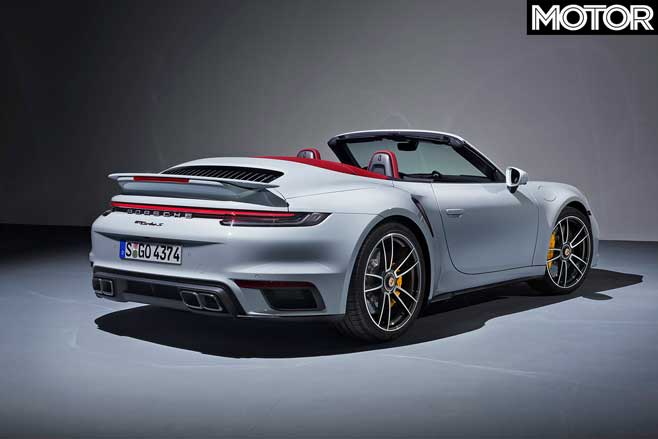
Weight is a key reason that any form of hybrid assistance – even a 48-volt mild hybrid system like that in the Porsche Panamera – has not yet been adopted: “The benefits of partial electrification are marginal compared to the complex weight, packaging and cost issues,” explained Walliser.
Instead, Porsche has made the Turbo faster the old-fashioned way, by adding lots and lots of power. An all-new 3.8-litre six-cylinder boxer, dubbed EA9A2, sits in its rear and it packs one hell of a haymaker.
Based on the engine found in the 911 Carrera model, an extra 800cc, bigger turbochargers, piezo fuel injectors and a completely redesigned intake system liberates a whopping 478kW at 7000rpm and 800Nm from 2500-4000rpm, hefty increases of 51kW/50Nm over its predecessor which, it must be said, didn’t lack urge in a straight line.
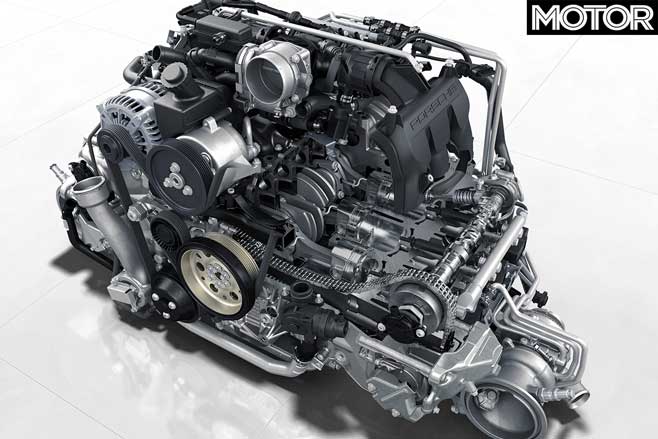
To achieve this massive grunt there are now four intakes, the traditional pair set into the rear guards supplemented by another pair in the engine cover. This increases the cross-section and lowers air resistance, improving engine efficiency.
This air is fed to a pair of variable-geometry turbochargers, the 55mm turbine wheels now 5mm larger and the 61mm compressor wheels 3mm bigger. Previously, the turbos were identical, however, they are now symmetrical, spinning in opposite directions on each side of the car, and incorporate electrically adjustable wastegates for finer boost control.
Porsche claims a scant 2.7sec from 0-100km/h and 8.9sec from 0-200km/h, the latter a one-second improvement over the PCOTY-winning 991.2 Turbo S. This, remember, was a car that clocked a 10.7sec quarter mile at 212.7km/h in our hands; it seems reasonable to expect its vastly more powerful successor to shave a couple of tenths off that at least. Berserk.
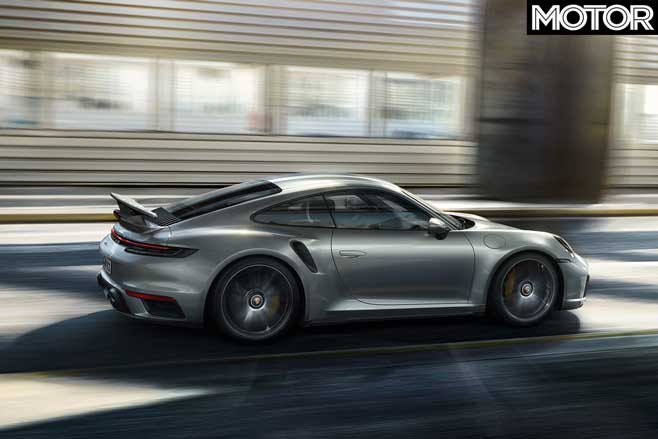
Key to this head-bursting acceleration is the new eight-speed PDK gearbox and all-wheel drive system, an updated transfer case able to send up to 500Nm to the front wheels. Top speed remains 330km/h, achieved in sixth, the final two gears used as overdrives. As is now the norm, drive modes are selected via a steering wheel-mounted rotary switch, with the Sport Response button priming the engine for maximum attack instantly.
To keep the car pinned to the ground at warp speed, downforce has increased by 15 per cent. The main influences are the larger, active rear wing and pneumatically operated front air dam that slides out below the redesigned front bumper, while electronically controlled flaps also aid cooling or reduce drag as necessary.
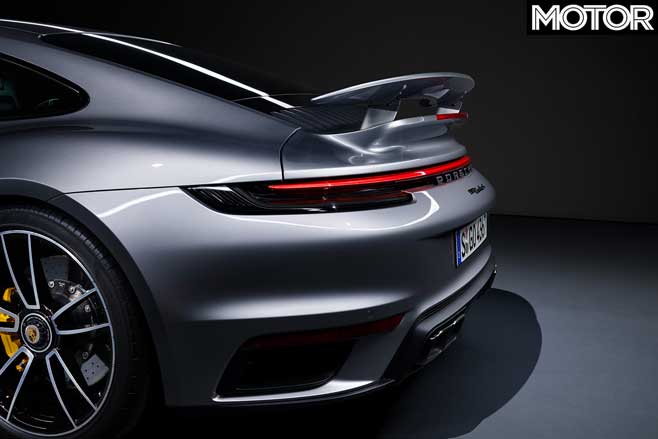
Larger air intakes, dual horizontal running lights and matrix LED headlights are all elements of the new face, while at the rear a larger diffuser, squarer bumper and quartet of rectangular exhaust outlets sit below the 992’s signature full-width tail-light strip.
Inside, as with all the latest-generation 911s, there has been a huge lift in design and technology. The trademark central analogue tachometer is flanked by a pair of digital screens while infotainment duties are handled by a 10.9-inch central touchscreen.
Aussie cars will come fully loaded with heated 18-way adjustable seats, keyless entry and go, BOSE surround sound stereo, digital radio and a full leather interior with carbon trim and silver accents, though if you have specific requests, Porsche’s Exclusive Manufaktur department will undoubtedly be able to accommodate them – for a price.
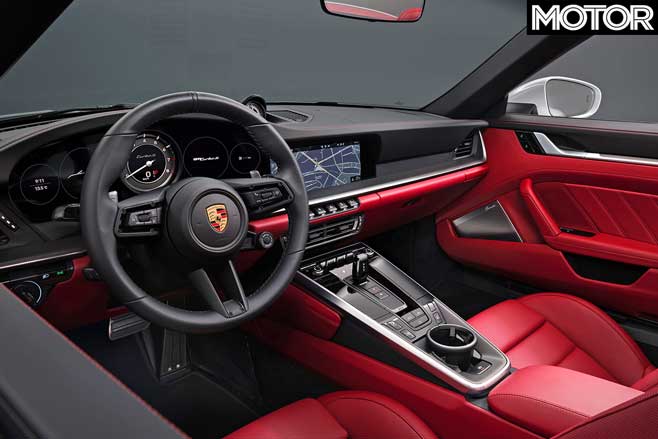
Speaking of, the new 911 Turbo S is scheduled to arrive in Australia in the second half of 2020 starting at $473,900 for the Coupe and $494,900 for the Cabriolet. Next month, we’ll be behind the wheel.
When is a 911 Turbo a Turbo?
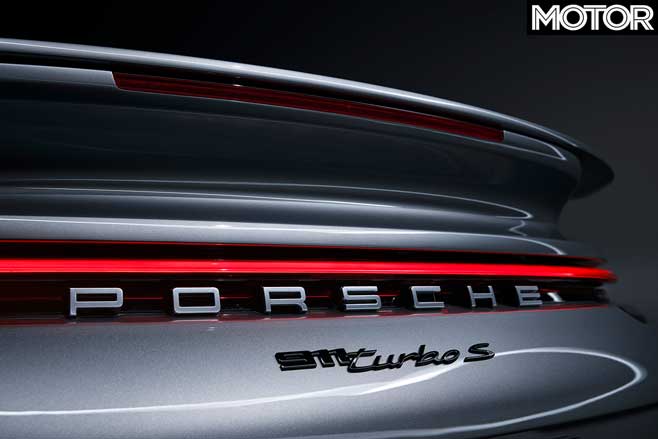
Porsche describes the new 992 Turbo as “Definitely Turbo”, but when all series production 911s use turbocharged engines, what’s the point of the actual Turbo model? Power is obviously a key differentiator, the new Turbo producing 478kW/800Nm instead of the 331kW/530Nm delivered by the Carrera S. It goes deeper than that, however, with the two variants separated by their power delivery.
Powertrain engineer Thomas Wasserbach neatly explains the difference: “It’s a different characteristic of the curve of the power. The 911 Carrera we want a feeling which is near to a naturally-aspirated engine, and the 911 Turbo we need the maximum torque at lower speeds.”
By adjusting ignition and camshaft timing, throttle positioning and wastegate position, Porsche is able to map out a linear power curve in its Carrera models that encourages the driver to use maximum revs in search of power. In contrast, the Turbo is focused more on mid-range punch and delivering the vicious thrust of torque that force-fed engines are traditionally known for.
The next step for turbocharging is to use an electric motor to either assist the exhaust gasses in spinning the turbine wheel or replace it entirely. It also allows energy to be recovered from the movement of the wheels, which is the device called an MGU-H in today’s Formula 1 engines.


